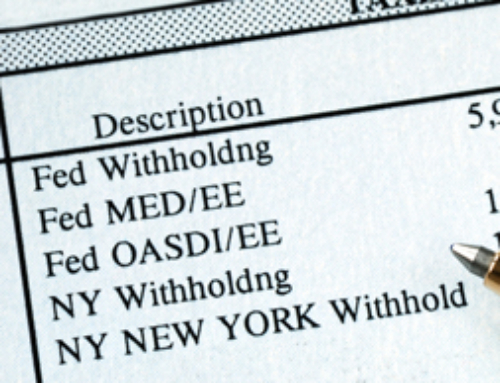
One of the great things about having a job is your employer handles all that pesky payroll withholding and reporting stuff. All you have to do each year is file your tax return and claim your refund.
When you run your own shop or are self-employed, there’s so much paperwork you barely have time to run the business! Unfortunately, estimated tax payments (ES payments) are one more administrative burden and financial responsibility for you to shoulder.
Here are some questions my clients frequently ask me about making estimated tax payments.
Who must make estimated tax payments?
If you’re self-employed and making a profit, you must set aside approximately a third of your profits to put toward IRS and self-employment taxes. Plus, if you live in one of the states with an income tax (find out if you live in a state without a state income tax), set aside an additional 5 to10 percent to cover state taxes.
Wow! That hurts. You’re going to have to pay it sooner or later; you may as well build the taxes into your routine budget.
When are estimated tax payments due?
Estimated tax payments are due quarterly. That doesn’t mean every three months. The IRS lives on a different schedule from the rest of humanity. Your estimated tax payments must be postmarked by:
April 15
June 15
September 15
January 15
When the 15th lands on a weekend or holiday, the payments are due on the next business day.
How can I pay my estimated taxes?
There are three ways to make estimated tax payments:
- Use IRS payment vouchers—Form 1040-ES—and mail them in to the IRS. Use your state’s estimated tax vouchers, or call your state for forms.
- Pay IRS online, with nary a fee, using EFTPS—the Electronic Federal Tax Payment System. It takes a week or two to set up. Once established, your EFTPS account links directly to your bank account. Pre-schedule payments and forget about them. Or change them before the due date. Some states also have similar online payment systems.
- Use your credit or debit card to pay your estimated taxes—but you’ll have to pay extra fees to do so.
Can I avoid estimated tax payments?
You betcha! Here are three easy ways to avoid estimated tax payments but still cover your taxes owed to the IRS:
- If you or your spouse has a job, simply increase your payroll taxes withheld. Either spread your estimated payments out over several months instead of making them quarterly, or dramatically increase your withholding for the last month or two of the year. You will still get credit as if you made the payments throughout the year.
- Have profits, including self-employment taxes, that generate less than $1,000 of taxes in excess of your (and your spouse’s) withholding.
- Pay in at least 100 percent of last year’s tax liability via withholdings (110 percent if last year’s adjusted gross income was $150,000, or $75,000 if married filing separately).
You’ll find more details in chapter 2 of IRS Publication 505.
What if I don’t make estimated tax payments but pay my taxes by April 15?
The IRS charges an underpayment penalty of approximately 4 percent per year. That’s less than credit card interest. Even if you draw money for the payments from a zero percent credit card, there’s a 3 percent cash advance fee. This is actually pretty cheap money.
But if you can’t cover the taxes by April 15, the stakes go up. So don’t gamble.
Have you run into any roadblocks with estimated tax payments?
Eva Rosenberg, EA is the publisher of TaxMama.com, where your tax questions are answered. Eva is the author of several books and ebooks, including Small Business Taxes Made Easy. Eva teaches a tax pro course at IRSExams.com.






